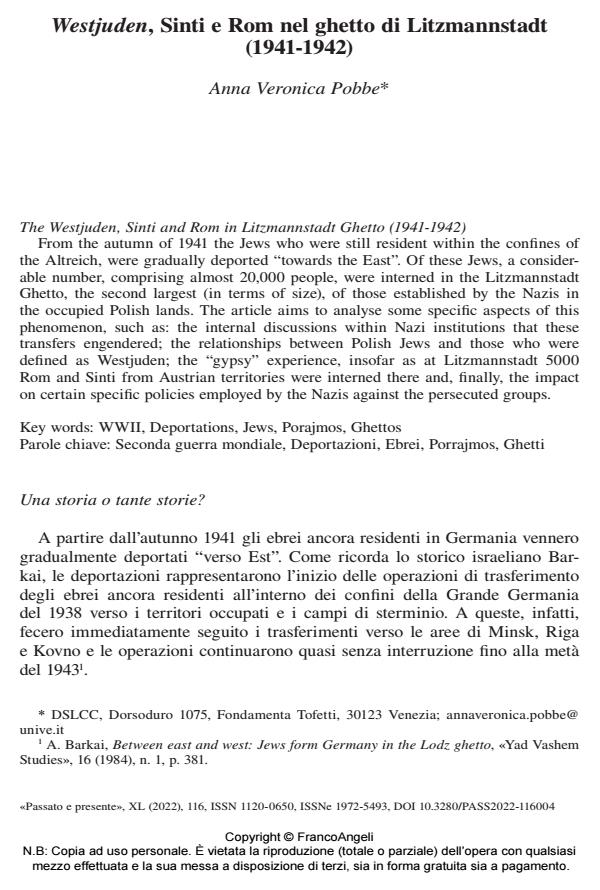The Westjuden, Sinti and Rom in Litzmannstadt Ghetto (1941-1942)
Journal title PASSATO E PRESENTE
Author/s
Publishing Year 2022 Issue 2022/116
Language Italian Pages 17 P. 57-73 File size 207 KB
DOI 10.3280/PASS2022-116004
DOI is like a bar code for intellectual property: to have more infomation
click here
Below, you can see the article first page
If you want to buy this article in PDF format, you can do it, following the instructions to buy download credits

FrancoAngeli is member of Publishers International Linking Association, Inc (PILA), a not-for-profit association which run the CrossRef service enabling links to and from online scholarly content.
From the autumn of 1941 the Jews who were still resident within the confines of the Altreich, were gradually deported "towards the East". Of these Jews, a considerable number, comprising almost 20,000 people, were interned in the Litzmannstadt Ghetto, the second largest (in terms of size), of those established by the Nazis in the occupied Polish lands. The article aims to analyse some specific aspects of this phenomenon, such as: the internal discussions within Nazi institutions that these transfers engendered; the relationships between Polish Jews and those who were defined as Westjuden; the "gypsy" experience, insofar as at Litzmannstadt 5000 Rom and Sinti from Austrian territories were interned there and, finally, the impact on certain specific policies employed by the Nazis against the persecuted groups.
Keywords: WWII, Deportations, Jews, Porajmos, Ghettos
, Westjuden, Sinti e Rom nel ghetto di Litzmannstadt (1941-1942) in "PASSATO E PRESENTE" 116/2022, pp 57-73, DOI: 10.3280/PASS2022-116004